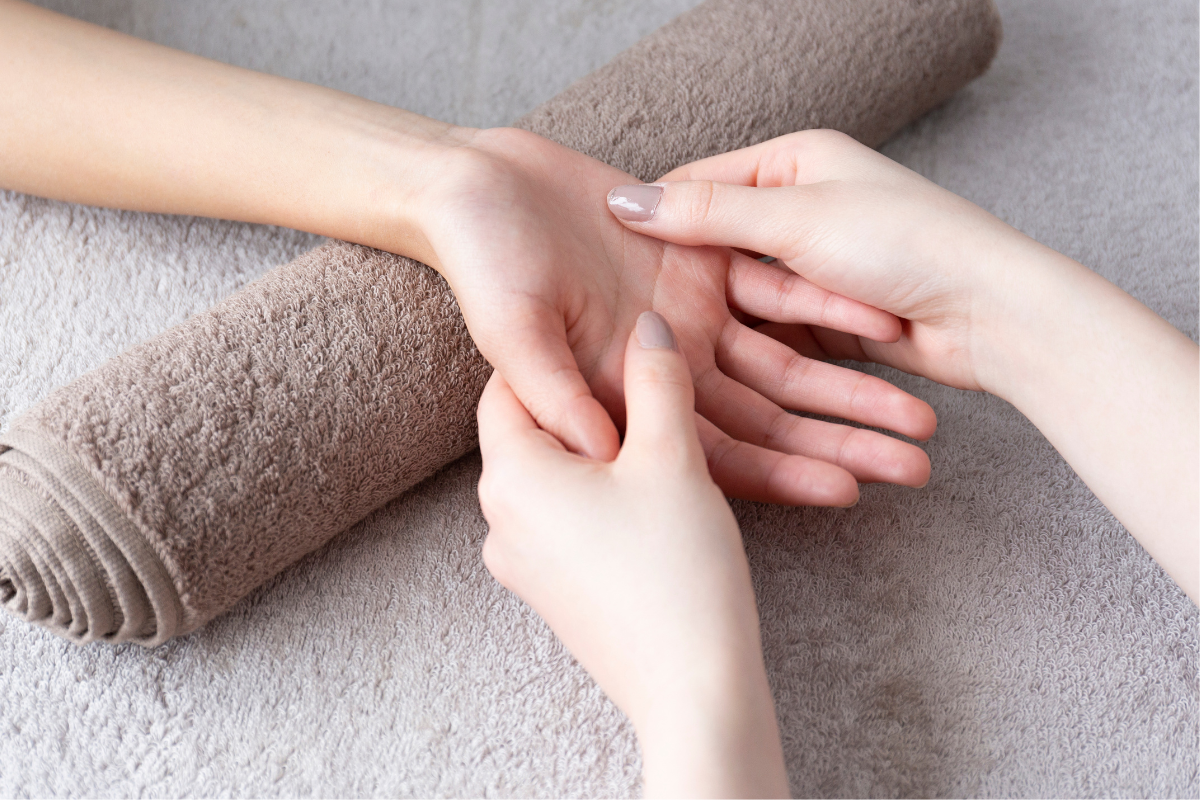Carpal Tunnel Syndrome (CTS), a common affliction among digital artists, can be debilitating and impact both creativity and overall well-being. While preventive measures and ergonomic adjustments in the digital studio are essential, exploring alternative therapies can complement traditional approaches. In this blog post, we delve into the world of reflexology and its potential role in managing Carpal Tunnel Syndrome, offering a holistic and soothing solution to alleviate symptoms and promote hand health.
Understanding Reflexology:
Reflexology is an ancient practice rooted in the belief that specific points on the feet, hands, and ears correspond to various organs and systems within the body. By applying pressure to these reflex points, practitioners aim to stimulate energy flow and restore balance to the body’s natural healing processes. While primarily known for its relaxation benefits, reflexology has shown promise in addressing pain and discomfort associated with conditions like Carpal Tunnel Syndrome.
How Reflexology May Help CTS:
- Improved Blood Circulation:
- Reflexology involves massaging specific points on the feet that are believed to correspond to the hands and wrists.
- By stimulating these reflex points, blood circulation to the extremities is enhanced, potentially reducing swelling and inflammation in the carpal tunnel.
- Nerve Stimulation:
- The nerves in the feet are intricately connected to the nervous system throughout the body.
- Reflexology may help stimulate the nerves associated with the hands, promoting better nerve function and potentially alleviating numbness and tingling sensations.
- Stress Reduction:
- Chronic stress is known to exacerbate CTS symptoms.
- Reflexology induces a state of deep relaxation, reducing stress hormones and creating an environment conducive to healing.
- Release of Tension and Tightness:
- The hands and wrists are subject to repetitive motions in digital artistry, leading to tension and tightness.
- Reflexology’s focus on relaxing the muscles may help release tension in the hands and wrists, providing relief from pain.
- Enhanced Overall Well-being:
- Reflexology is not just about addressing specific symptoms but promoting overall well-being.
- By targeting various reflex points, the body’s natural healing mechanisms are activated, contributing to a sense of balance and harmony.
Example Session: Sole Soothing Solutions
- Warm-Up:
- Begin the reflexology session with a warm foot soak infused with Epsom salts and essential oils known for their anti-inflammatory properties.
- The warmth prepares the feet for the upcoming massage and promotes relaxation.
- General Reflexology:
- Perform a general reflexology massage, focusing on areas associated with the hands, wrists, and forearms.
- Use gentle pressure and circular motions to stimulate the reflex points, paying attention to any areas that may be tender or congested.
- Specific Hand Reflex Points:
- Zone in on specific reflex points corresponding to the hands and wrists.
- Apply targeted pressure to these points, using techniques like thumb walking and finger rotation.
- Finger Flexibility Exercises:
- Integrate finger flexibility exercises during the reflexology session.
- Encourage gentle stretches and movements to enhance joint flexibility and alleviate stiffness.
- Aromatherapy and Relaxation Techniques:
- Incorporate aromatherapy by diffusing calming essential oils throughout the session.
- Employ relaxation techniques such as deep breathing and guided imagery to enhance the overall calming effect.
Incorporating Reflexology into Daily Practices
The benefits of reflexology extend beyond occasional sessions. Integrating simple reflexology techniques into daily practices can contribute to ongoing symptom management and long-term well-being. Here are some practical ways one can incorporate reflexology into their daily routine:
- Self-Massage During Breaks:
- Take short breaks to perform self-reflexology on the feet.
- Focus on the areas corresponding to the hands and wrists, using your fingers or a small massage tool.
- Foot Rollers and Massage Balls:
- Keep a foot roller or massage ball under your desk to roll your feet over during breaks.
- Applying gentle pressure on these devices stimulates reflex points and promotes circulation.
- Elevated Feet During Work:
- Consider using a small footstool to elevate your feet slightly while working.
- This helps to maintain a more relaxed position and encourages blood flow to the feet and hands.
- Essential Oil Diffusion:
- Incorporate aromatherapy by diffusing calming essential oils in your workspace.
- Pleasant scents like lavender or chamomile can enhance the relaxation benefits of reflexology.
- Mindful Breathing Techniques:
- Pair reflexology with mindful breathing exercises.
- Take a few moments during breaks to practice deep, intentional breaths, enhancing the overall calming effect.
- Regular Professional Reflexology Sessions:
- Schedule regular reflexology sessions with a certified reflexologist.
- Professional guidance ensures a more targeted and effective approach to address specific concerns.
- Hydration and Nutrition:
- Stay well-hydrated and maintain a balanced diet to support overall health, including the health of your hands and wrists.
- Proper nutrition contributes to the effectiveness of reflexology in promoting healing.
- Hand and Wrist Stretches:
- Combine hand and wrist stretches with reflexology.
- As you work on your feet, incorporate gentle stretches for the fingers, wrists, and forearms.
Reflection and Adaptation
It’s crucial to note that reflexology, while offering potential benefits, is not a one-size-fits-all solution. Individual responses to alternative therapies can vary, and it’s essential to pay attention to how your body responds.
Regular reflection on your symptoms, along with open communication with healthcare professionals, will guide the adaptation of your reflexology routine. If any discomfort or worsening of symptoms occurs, it’s advisable to seek medical advice promptly.
In conclusion, reflexology presents an intriguing avenue for managing Carpal Tunnel Syndrome in the digital artist’s studio. By embracing this holistic practice, artists can tap into the ancient wisdom of foot-based therapies to promote not only hand health but overall well-being. As reflexology becomes an integral part of your self-care routine, you may discover a harmonious balance between the demands of digital creativity and the nurturing care your hands deserve.



